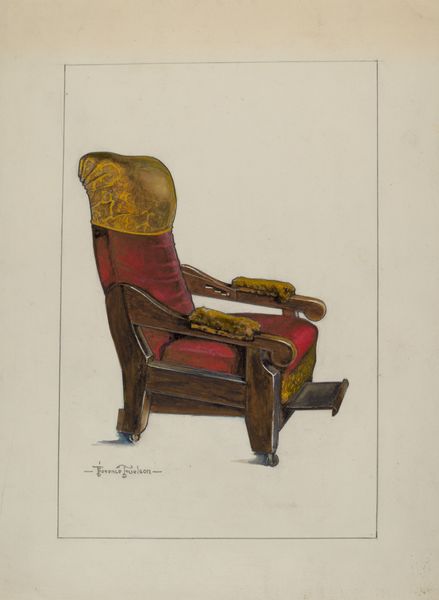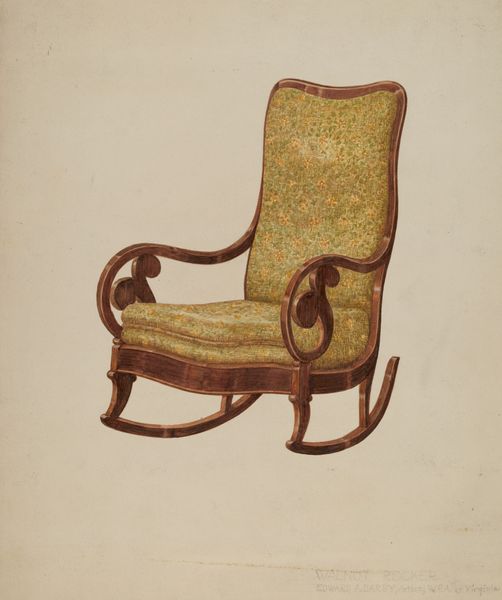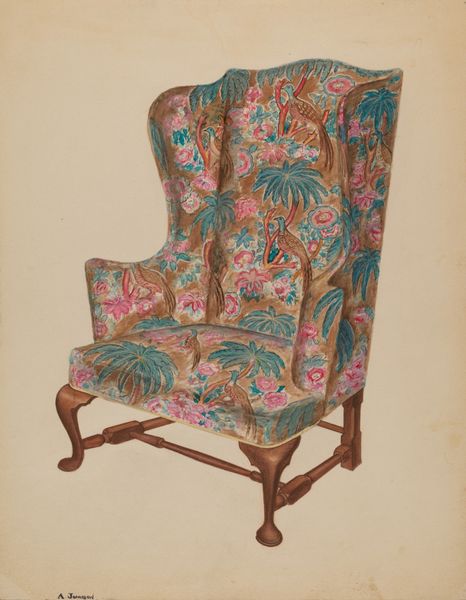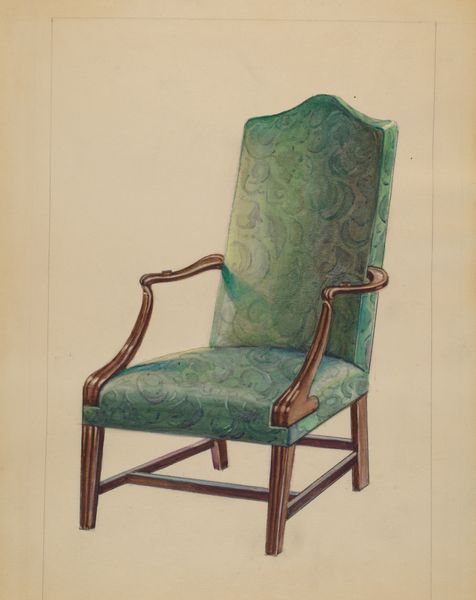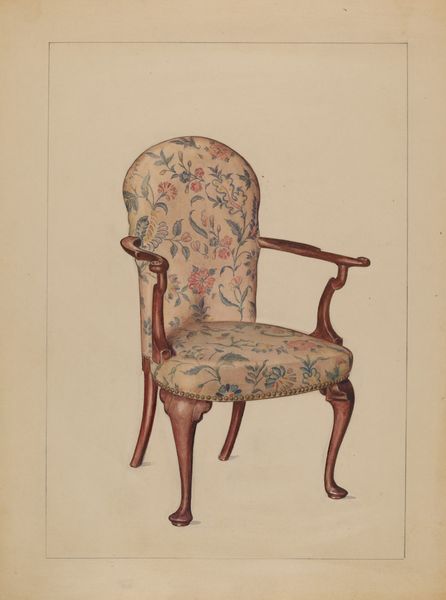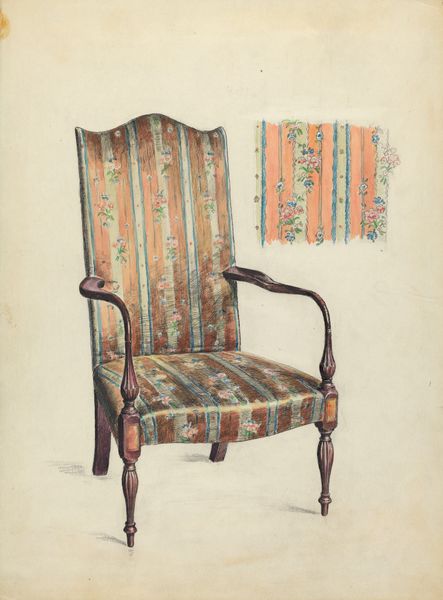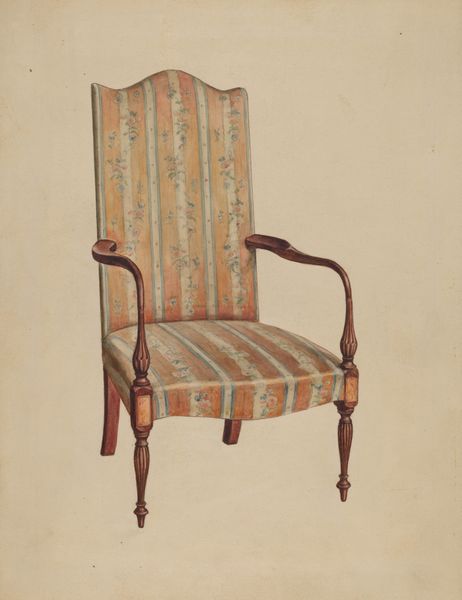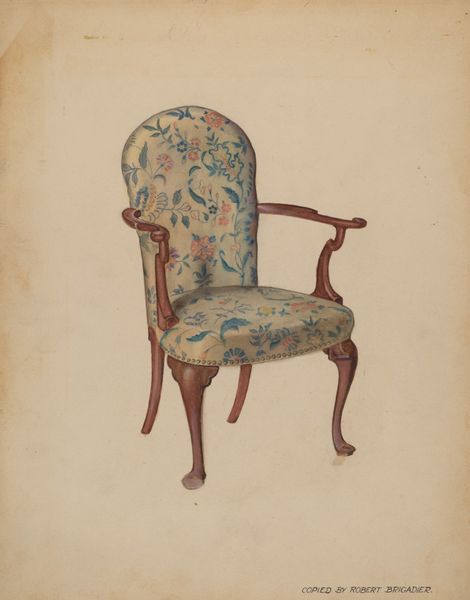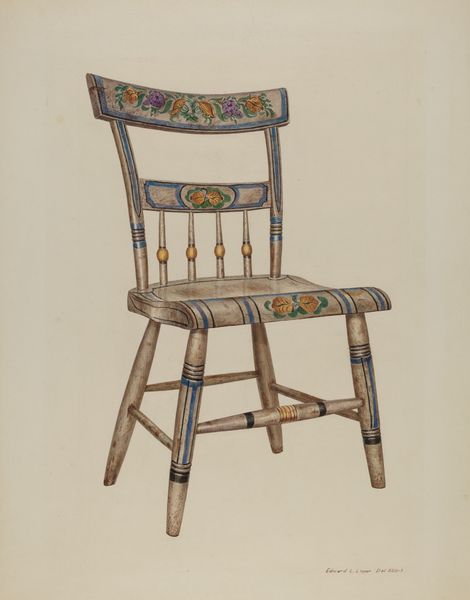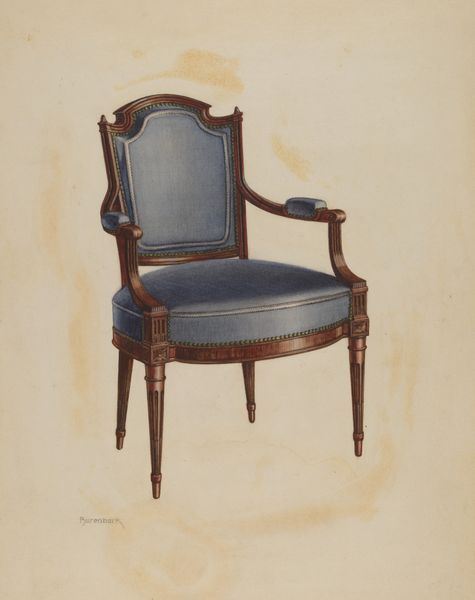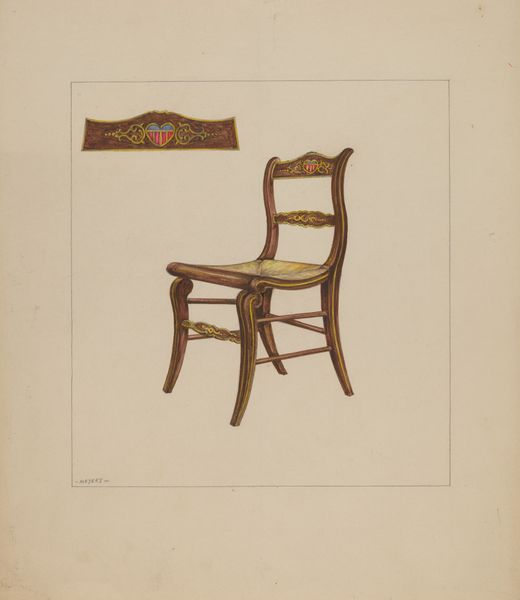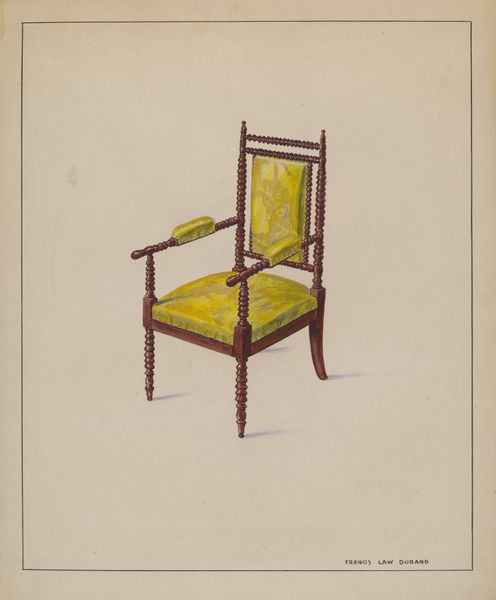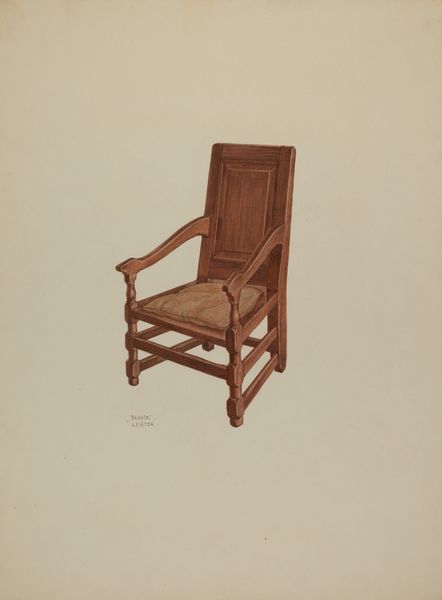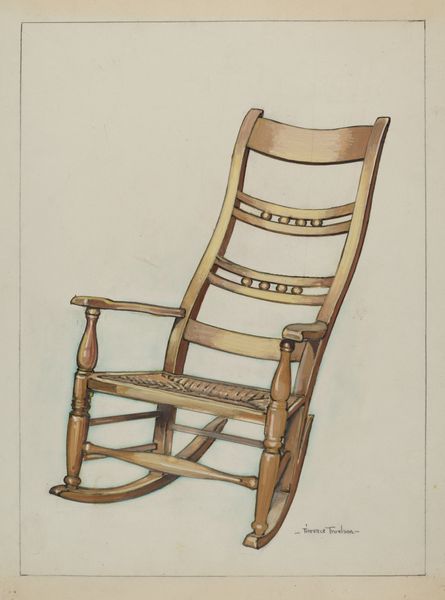
drawing, watercolor
#
drawing
#
furniture
#
watercolor
#
coloured pencil
#
watercolour illustration
#
watercolor
#
realism
Dimensions: overall: 28.1 x 22.8 cm (11 1/16 x 9 in.) Original IAD Object: 37 1/2"high; 24"wide; 18"deep (seat).
Copyright: National Gallery of Art: CC0 1.0
Curator: This watercolor and pencil drawing is titled "Rocking Chair," dating back to around 1937 and attributed to Alfred Walbeck. My first impression? It feels undeniably nostalgic. There's something so gentle about the floral pattern against the polished wood. Editor: Gentle and…bourgeois, maybe? It certainly evokes a specific time, and a particular kind of domestic comfort. It practically whispers of an era steeped in restrictive gender roles and class distinctions. Curator: I see your point, but the floral patterns themselves resonate beyond a mere class marker. Consider the recurring vase motif within the upholstery. It is suggestive of nurture and bounty, a symbolic container holding life, linking domesticity with cyclical growth. The artist is clearly referencing those visual tropes. Editor: Tropes that perpetuate ideals of femininity, though, right? A "lady" at leisure, cultivating her domestic sphere. The chair itself becomes an emblem of enforced rest, perhaps a physical manifestation of societal expectations. Curator: Or maybe it reflects a yearning for a slower pace? Rocking chairs have often been associated with relaxation and contemplation. Think about the symbolic weight of a mother soothing a child, or the quiet rumination of elders. The watercolor medium contributes to a sense of delicate transience, like memories fading. Editor: But those "gentle" associations often mask harsher realities. Who *actually* has time to sit and contemplate in a rocking chair? It’s likely the privileged, those whose labor isn’t devalued or rendered invisible. Curator: That's certainly a relevant consideration. It is important to acknowledge that artistic depictions do not exist in a vacuum and can simultaneously carry multiple levels of meaning, representing both beauty and the codification of power. Editor: Absolutely. Seeing this rocking chair then, through that lens of social history, invites us to critically examine the ideals—and the exclusions—it represents. It's not just a cozy seat. It’s a cultural artifact loaded with the baggage of its time. Curator: So, rather than dismiss it as merely nostalgic, we can unpack the complex tapestry of symbols interwoven into its design. Thank you for those insightful insights. Editor: It's a crucial step in understanding not just art, but ourselves.
Comments
No comments
Be the first to comment and join the conversation on the ultimate creative platform.
